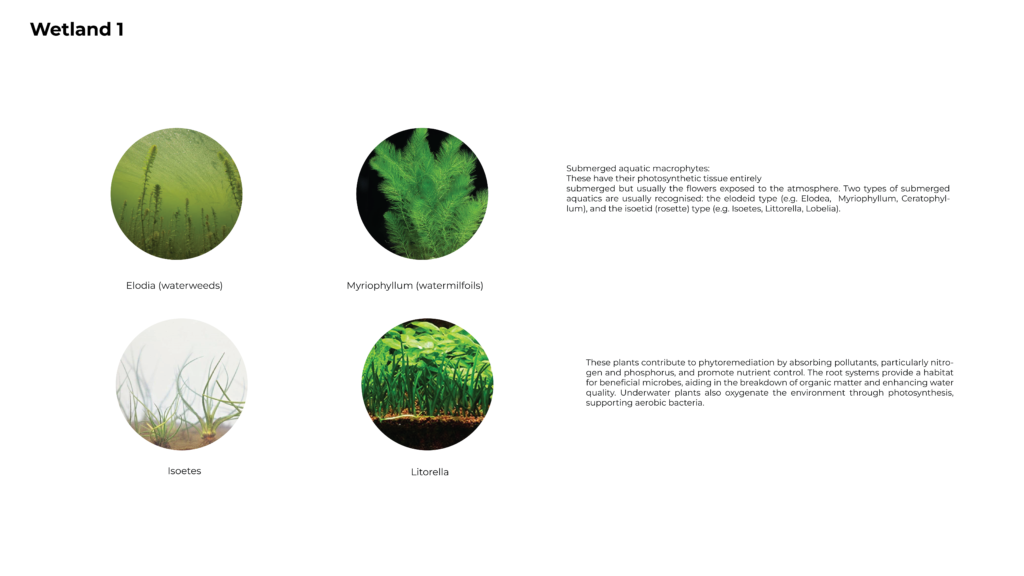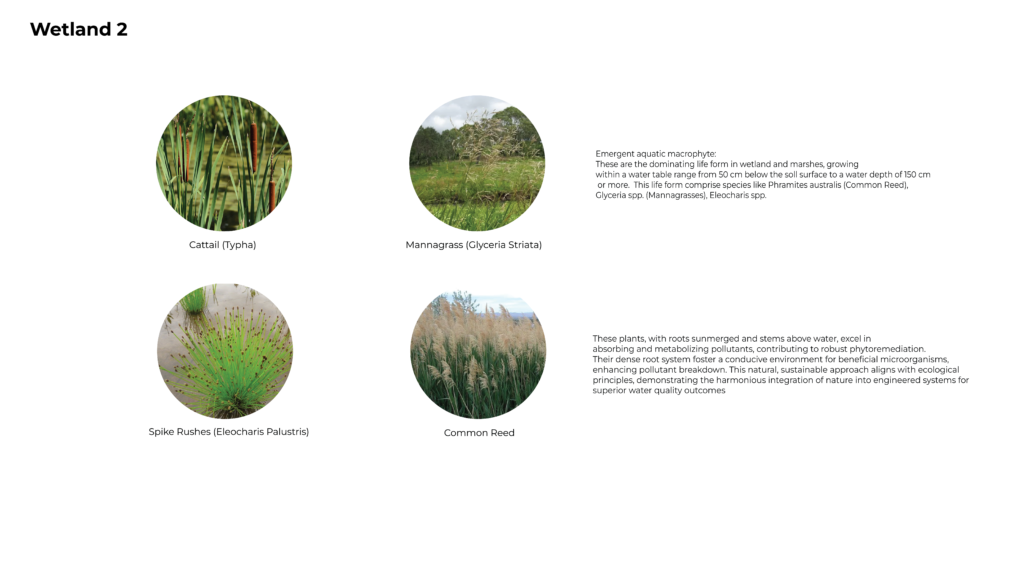STATEMENT
Proposing an eco-conscious water management system through metabolic water treatment for co-living communities,
this innovation project aims to repurpose water usages, effectively saving energy and optimizing resource allocation for wastewater management.
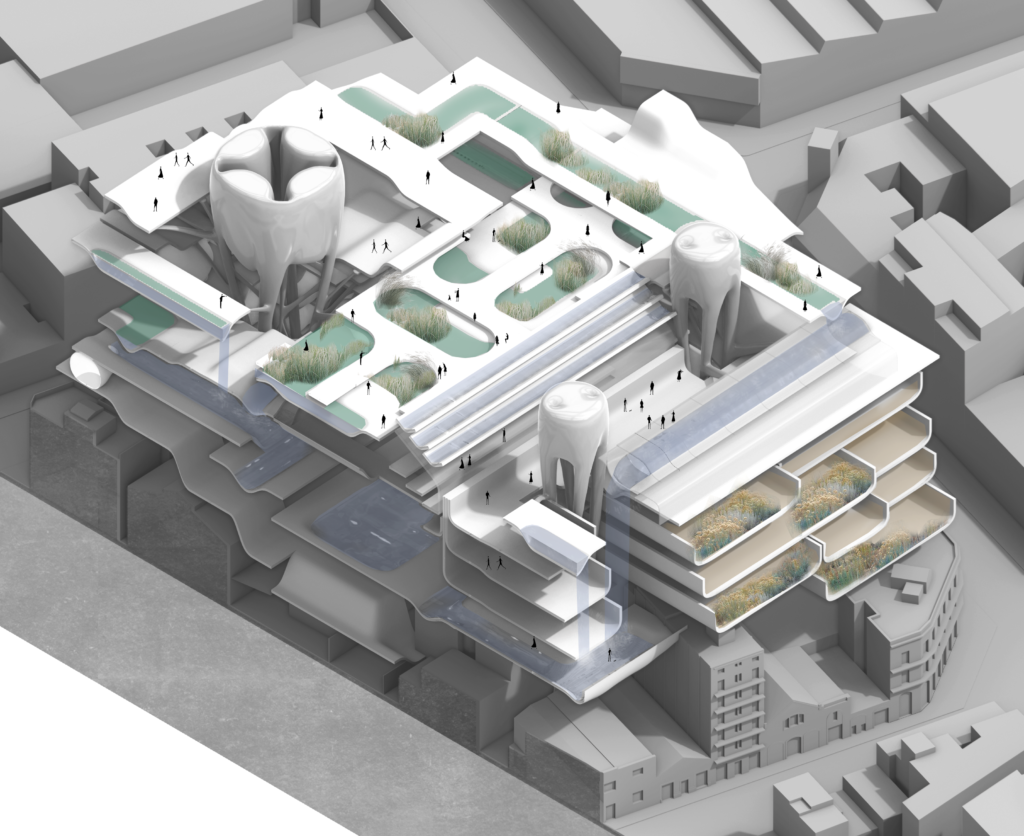
ABSTRACT
Our vision is to redefine the future of urban living by fostering sustainable activities that align together with the smart use of water, in order to allow the emergence of new possible solutions.
SITE

The site is positioned in the heart of the 22@ Poblenou district, characterized by a unique blend of abandoned factories and buildings
occupying nearly half of the plots. A defining feature of the site is a passage road that cuts through its expanse. Additionally,
a secluded green area, Passatge Trullas, has been designated as a communal space, providing a verdant retreat for the local communities
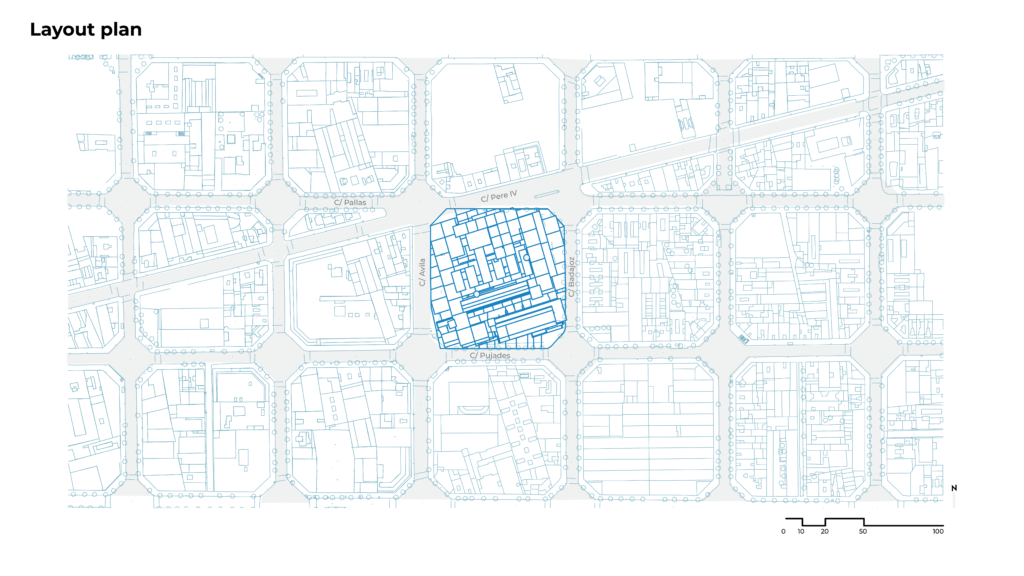
SITE ANALYSIS
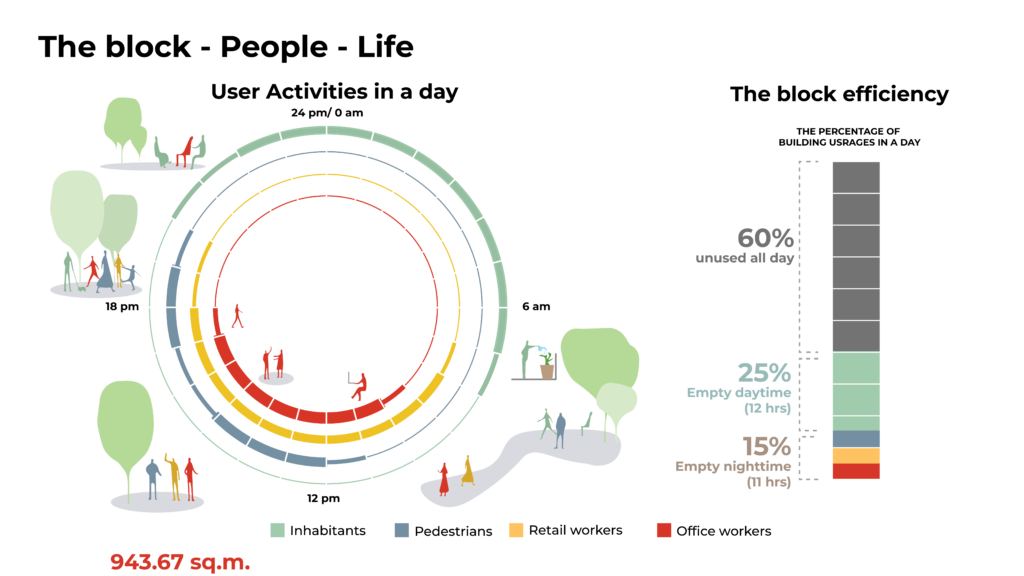
Our site unfolds across an expansive canvas of approximately 12,000 square meters, teeming with the pulse of 325 inhabitants.
As the site gracefully orchestrates a symphony of diverse on-site activities, an insightful observation emerges —
the dynamic rhythm of life within our architectural enclave. Within the confines of our block, the spirited dance
of activity becomes a compelling narrative, a testament to the thriving essence that animates our architectural canvas.
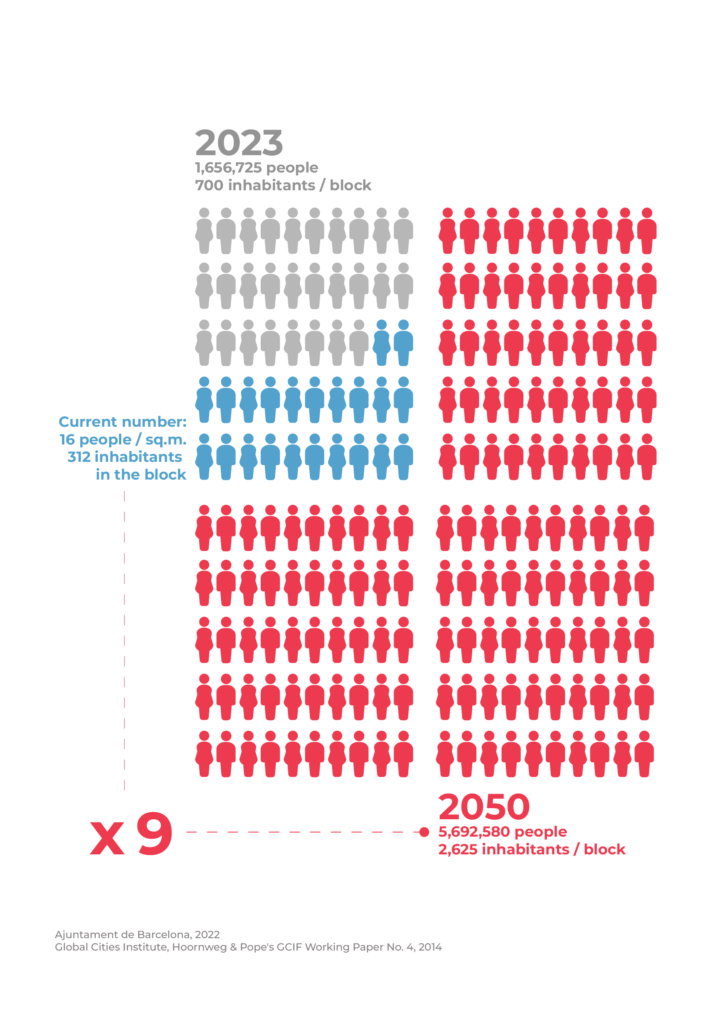
PHENOMENA

In 2050, Barcelona’s population is projected to reach 5 million, with approximately 2,800 inhabitants per block, leading to increased habitat density.
However, the city is grappling with a recent shortage of river water. Addressing the challenges arising from heightened population density
amid the climate change phenomenon entails a surge in demand for electricity and water. To navigate this challenge, a promising solution
involves water recycling, presenting an opportunity to alleviate water scarcity and meet the escalating demand for electricity.
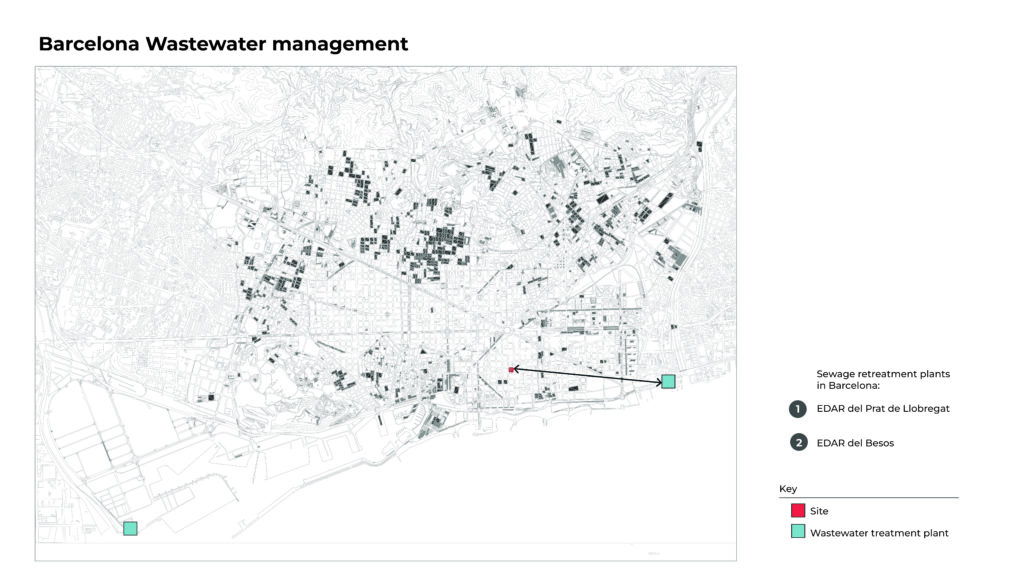
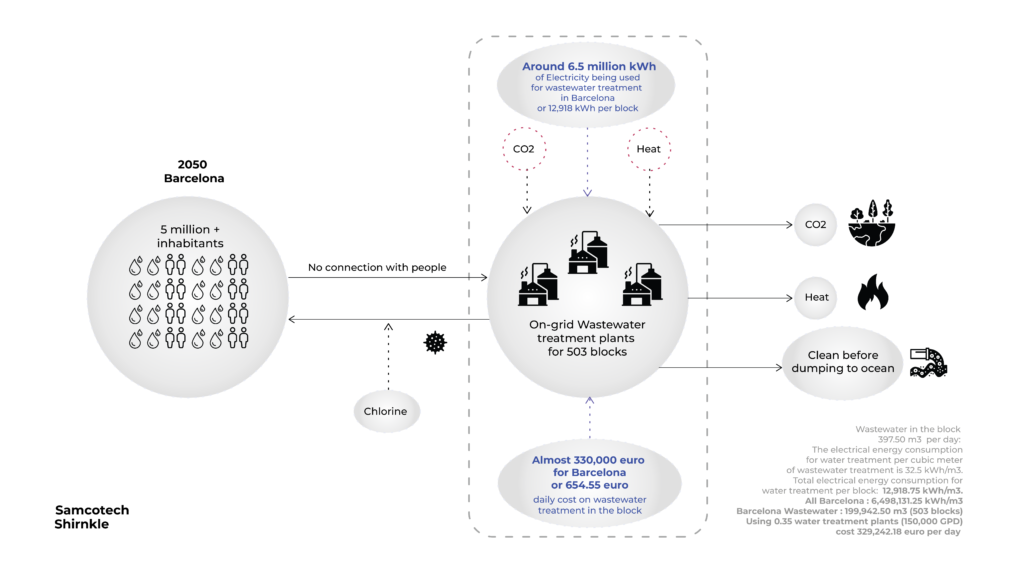
The current wastewater treatment plants (WWTP) in Barcelona operate in isolation from the surrounding communities.
These plants employ chemical processes to purify vast quantities of water, contributing significantly to energy consumption—
estimated to range from 1% to 3% of the global energy output. State-of-the-art facilities consume 20-45 kWh per
population equivalent (PE) connection, a figure expected to rise further due to the impacts of climate change.
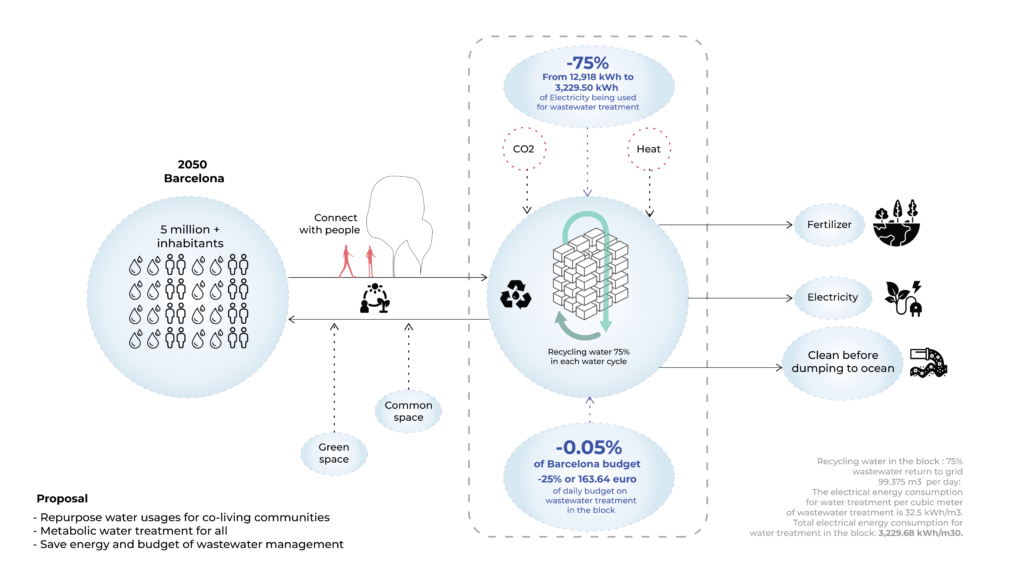
We aim to enhance and optimize each stage of wastewater treatment processes by integrating natural protocols and architectural elements,
such as structures, roofs, and slabs, into the system. This approach is intended to reimagine future co-living environments and deliver
improved outcomes for neighborhoods.

Explore the entire lifecycle of water, encompassing its origin in the water supply, the intricate processes of retreatment,
and its final destination in recycling, presented succinctly through a Sankey Diagram.
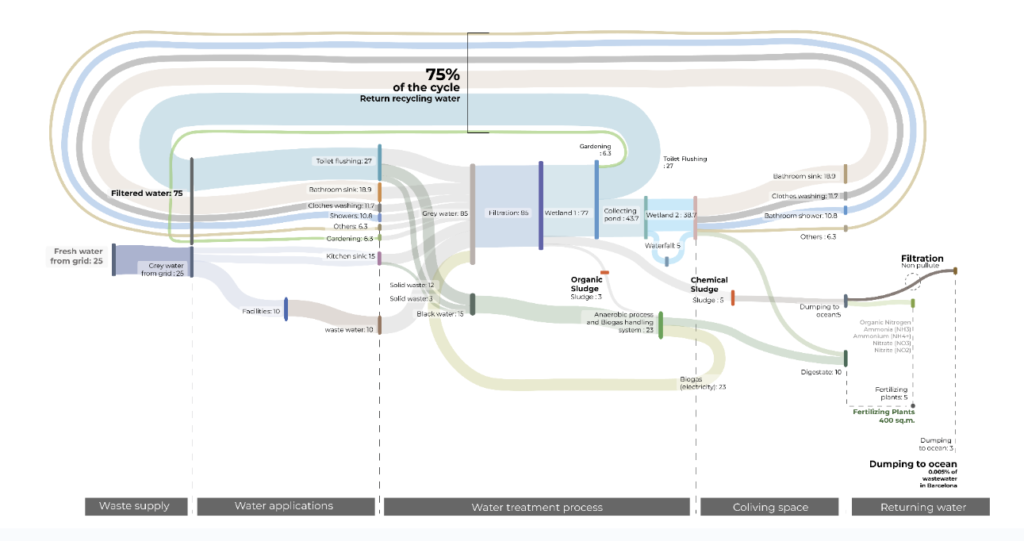

Exploring the synergy between metabolic water treatment processes and the practical applications of their outputs
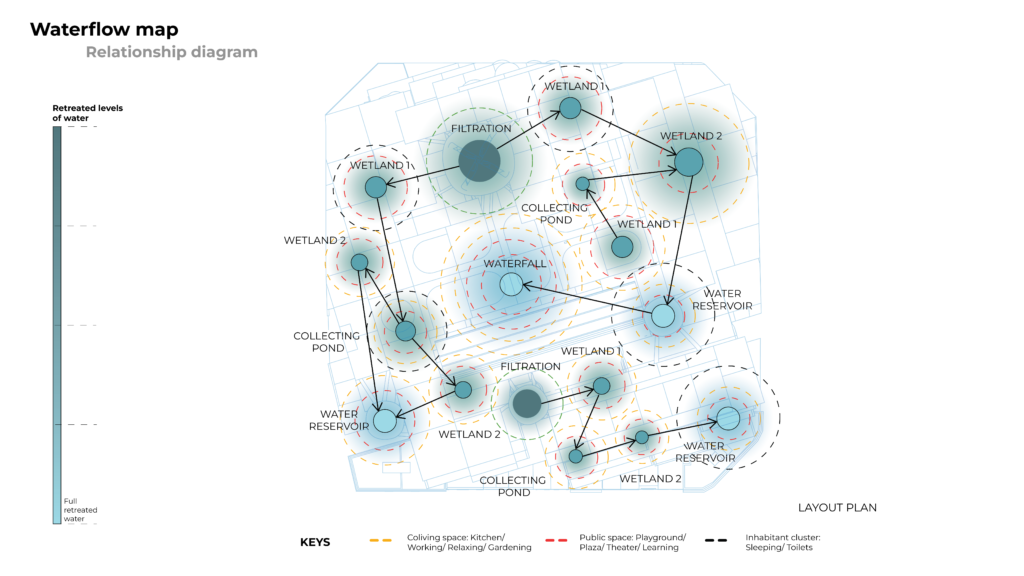
PROTOTYPES
The prototypes are designed to investigate the integration of water flow at various stages of architecture development.
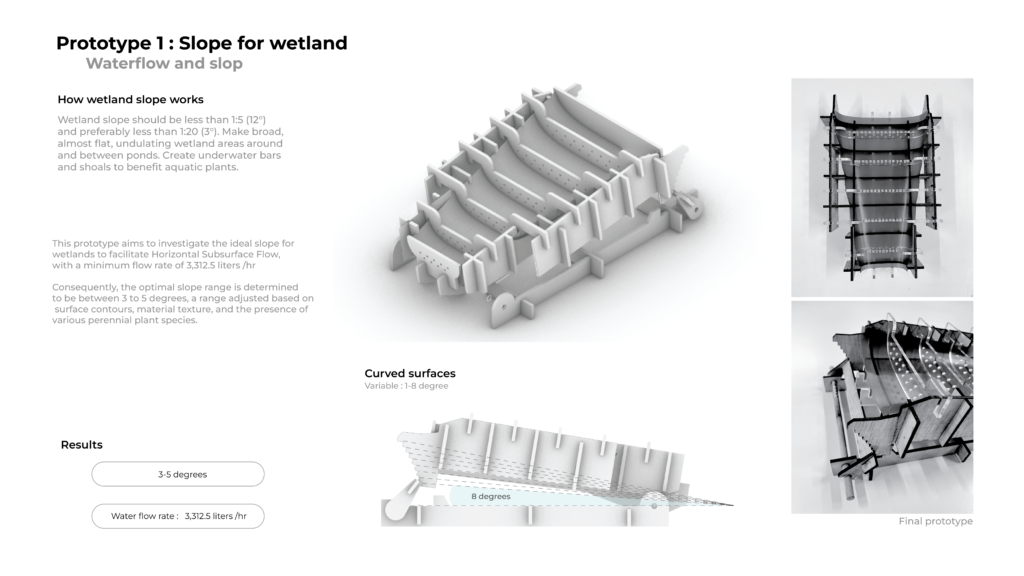
Prototype 1 focuses on the design approach, emphasizing the incorporation of water flow through the implementation of a wetland slope.
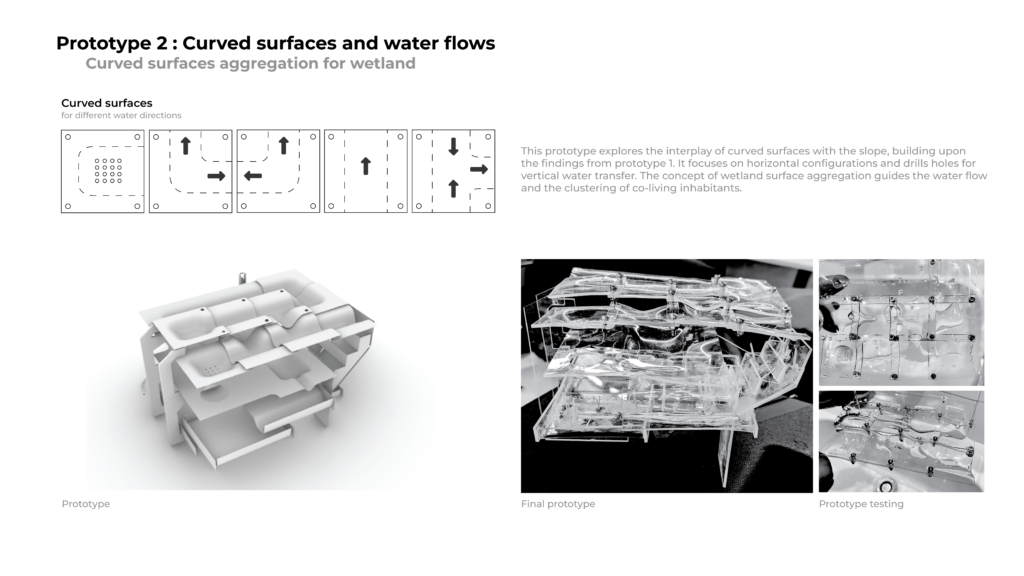
For Prototype 2, the design development centers around curved surfaces and their relationship with water flow, exploring how architectural elements can be shaped
to enhance and interact with water dynamics.
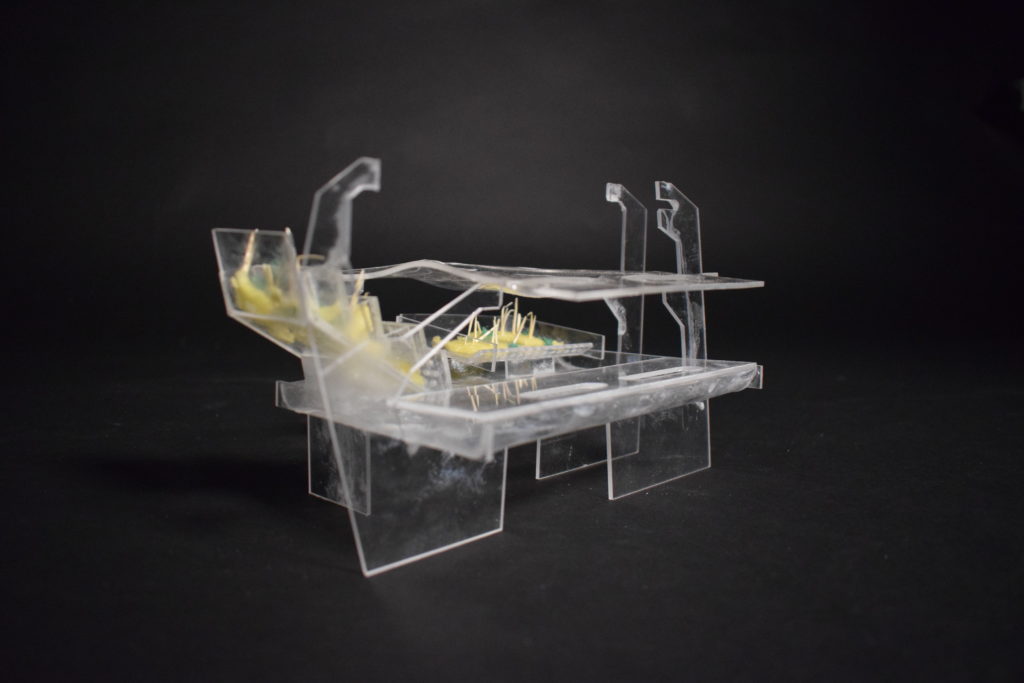
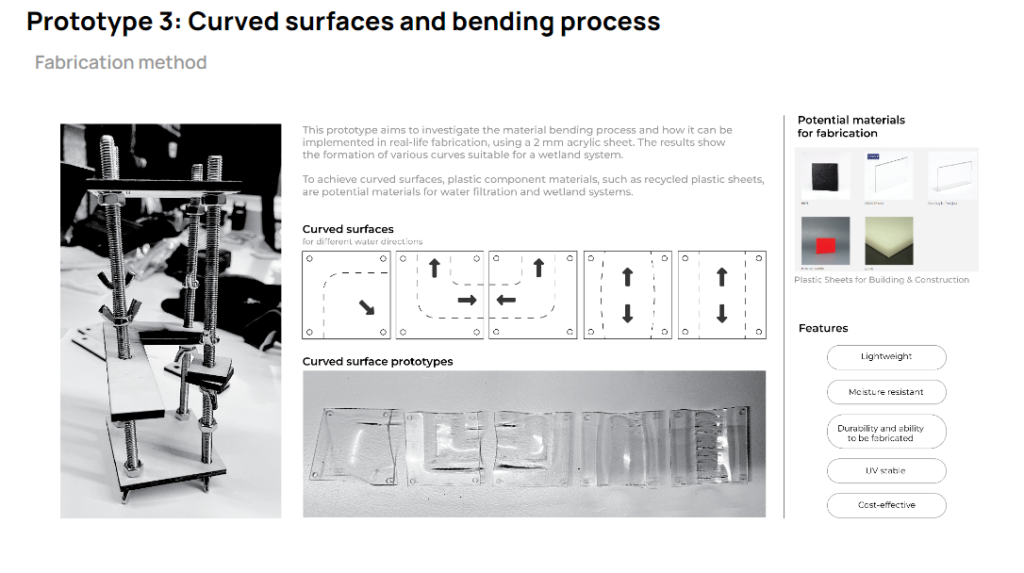
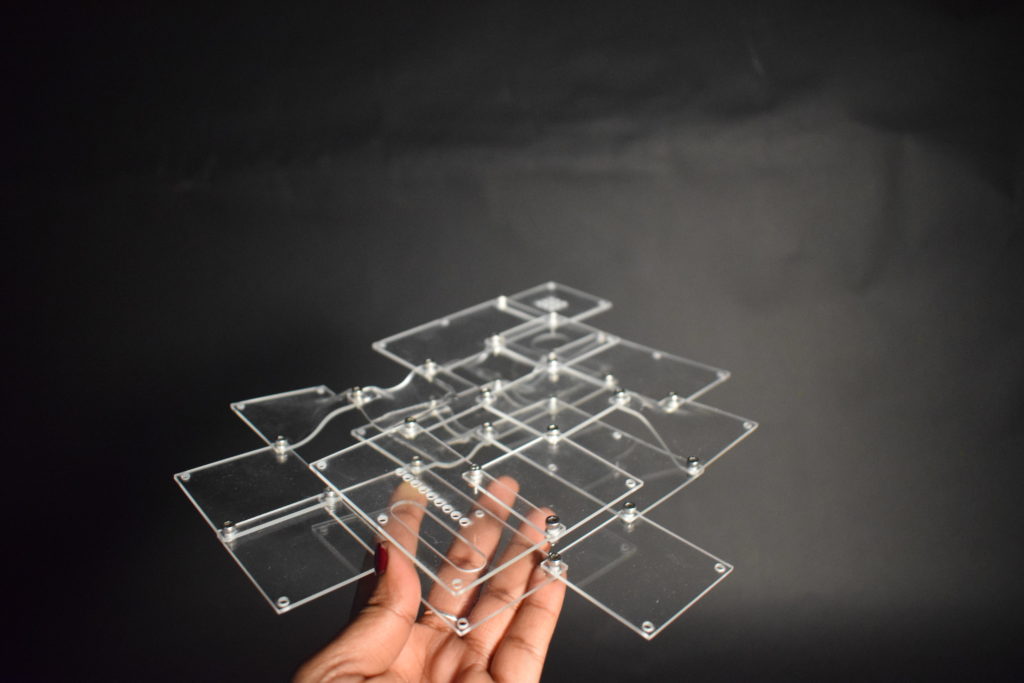

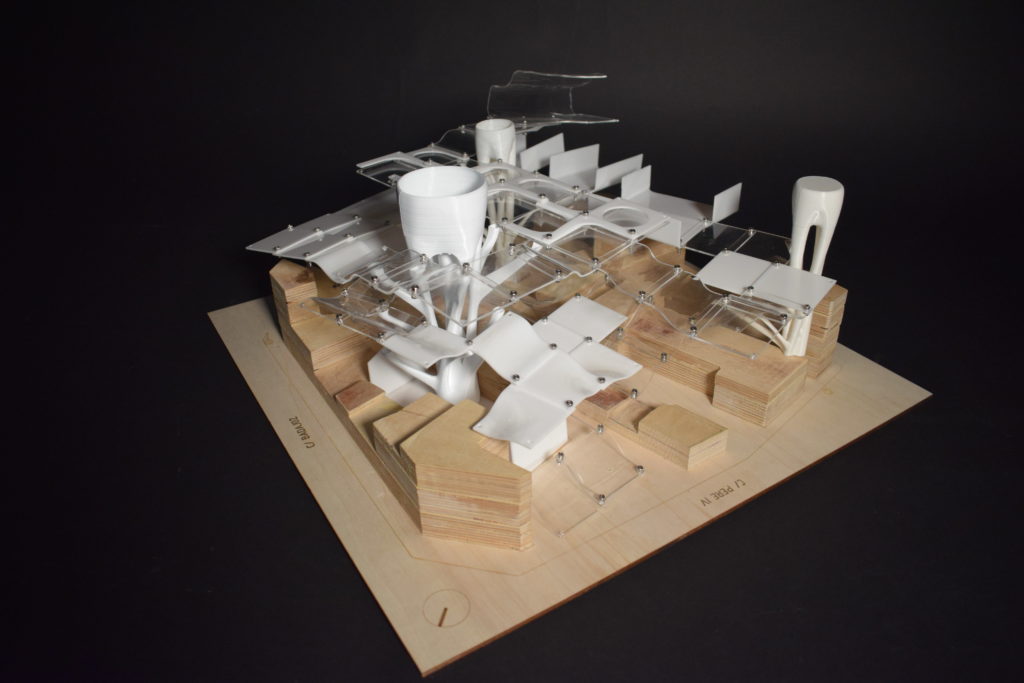
Prototype 3 introduces a smart prefabrication concept, specifically focusing on the bending process of curved surfaces. This aims to integrate intelligence
into the prefabrication stage to optimize the relationship between architectural design and water flow.
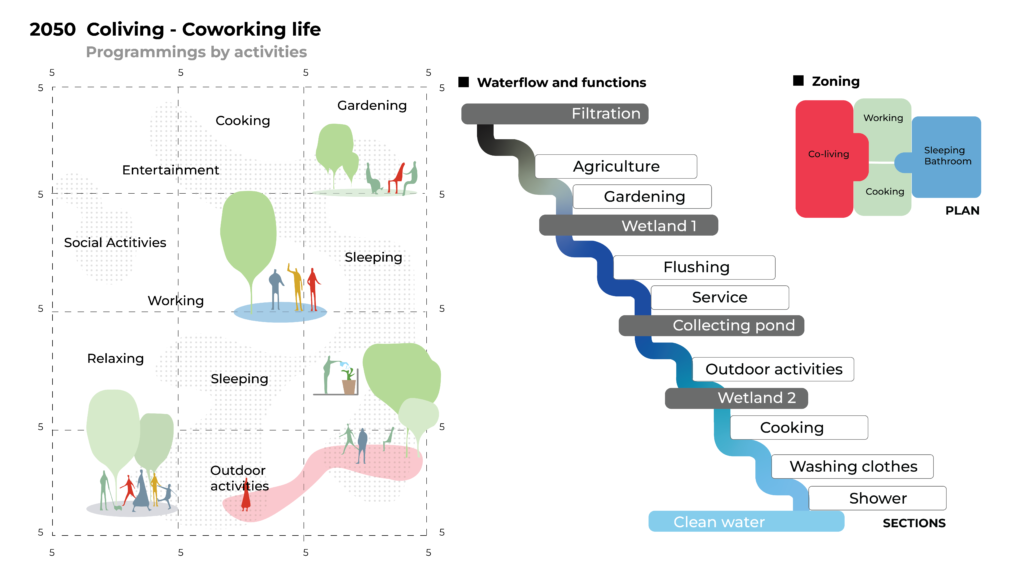
We aim to explore how water treatment processes can redefine future living by segregating dwellings into private functions such as sleeping and
private toilets, with co-living or semi public spaces designated for kitchen and living rooms. Simultaneously, the working area is envisioned
to facilitate interactions with gardening and social activities, creating a holistic and innovative approach to living spaces.

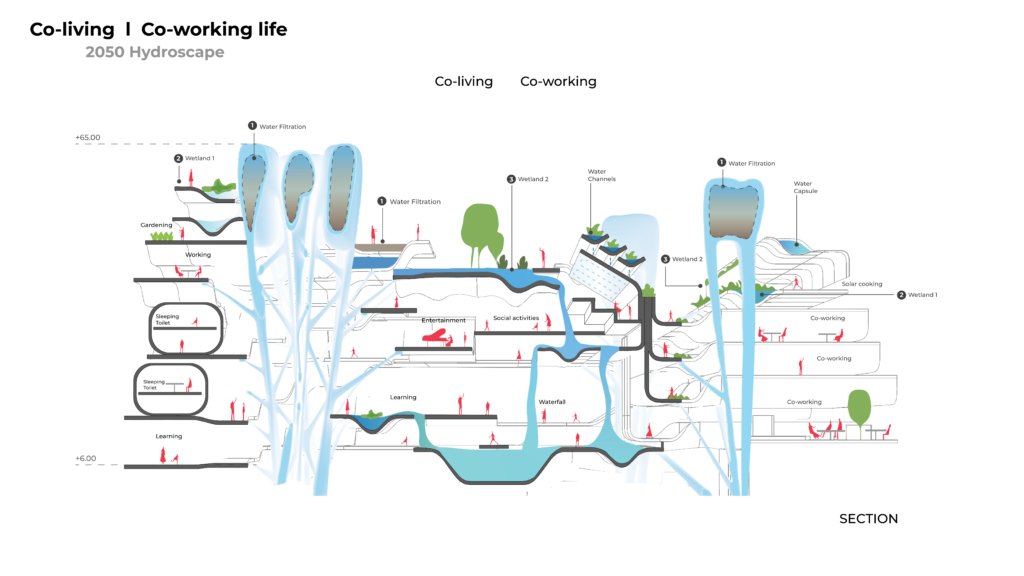
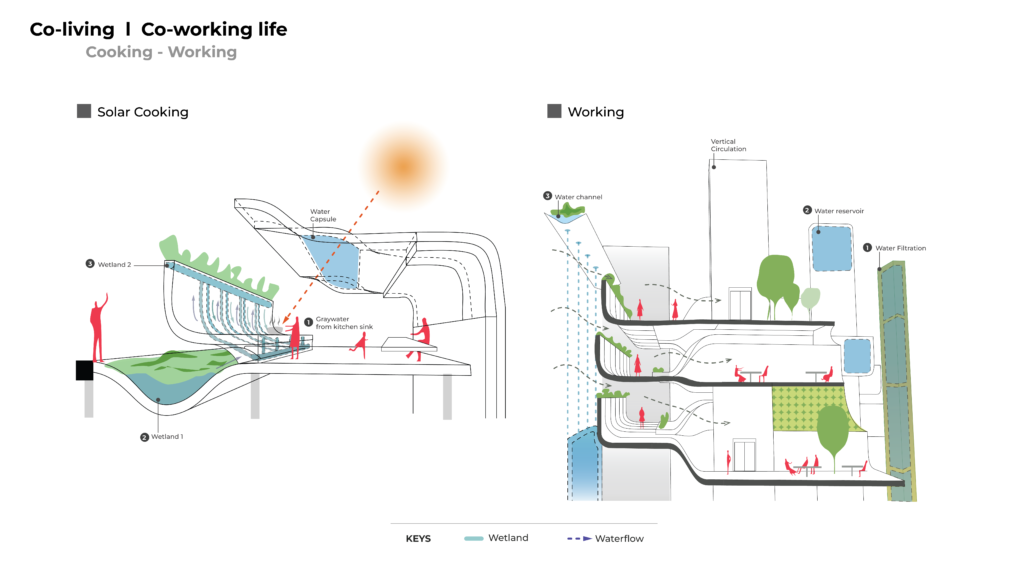


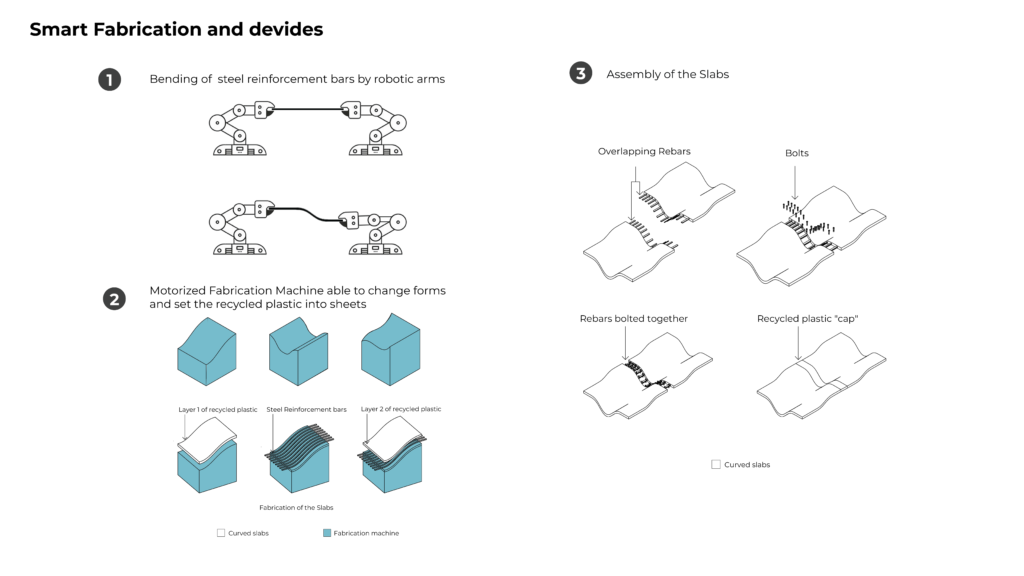
The project prioritizes the use of wetland elements as key materials, envisioning their continuous interaction with space and people over time. This deliberate choice aims to enrich the ecology and ecosystem, providing sustainable benefits to both wastewater treatment and the long-term environmental quality of neighborhoods.
